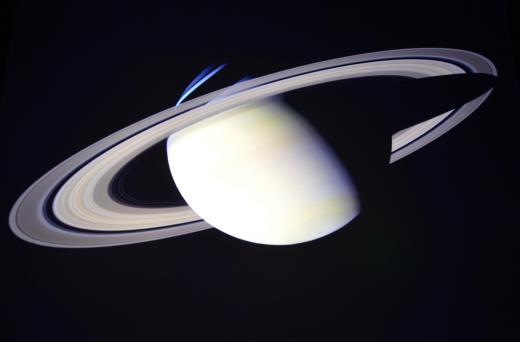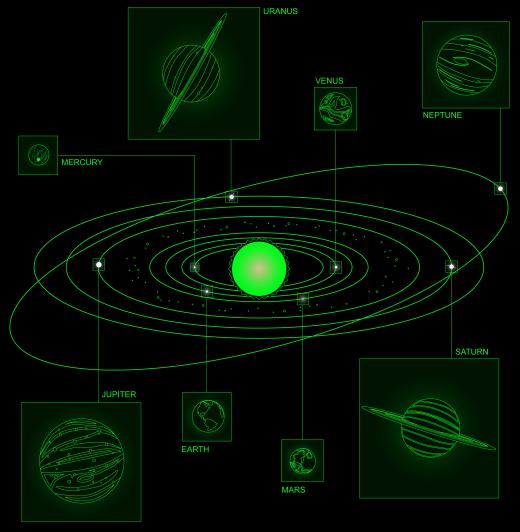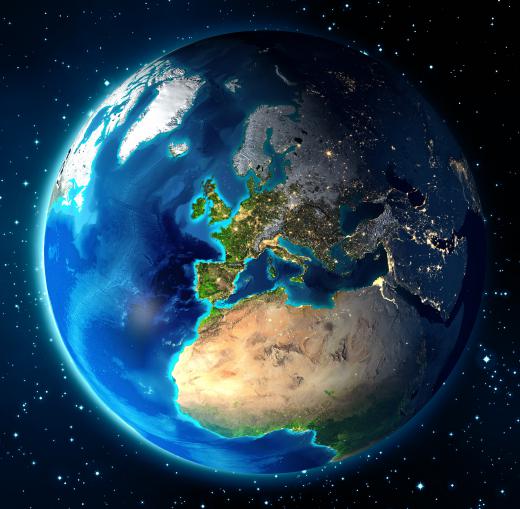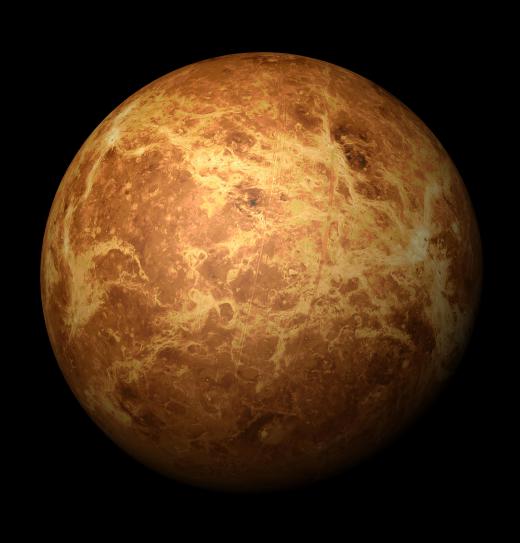What is a Terrestrial Planet?
A terrestrial planet is a term used to describe the four planets in the solar system that are closest to the Sun, Mercury, Venus, Earth, and Mars. These four planets are composed primarily of rock and have solid surfaces. The word terrestrial is derived from the Latin word terra, meaning ground or soil.
Besides a rocky, solid composition, the terrestrial planets share certain similar characteristics:
- They are close to the Sun.
- They either have no moons or few moons.
- They all have weak magnetic fields.
- They all have closely spaced orbits.
- None of the planets have rings around them.

The four other major planets, Jupiter, Saturn, Neptune, and Uranus, in the solar system are referred to as gas planets or Jovian planets, after the planet Jupiter which is the largest planet in the solar system. The gas planets are much larger than the terrestrial planets and are composed mainly of gas and liquid.
In contrast to the terrestrial planets, some characteristics of the gas planets are:
- They are all farther away from the Sun.
- They have multiple moons.
- They all possess strong magnetic fields.
- There is a greater distances between orbits.
- They all have some form of rings orbiting each planet.

Mercury is the smallest terrestrial planet and is the closest planet in the solar system to the Sun. The surface temperature of the planet ranges from a high of 840° Fahrenheit (450° Celsius) to possible low of -275° Fahrenheit (-170° Celsius). Mercury was named after the Roman god Mercury, who was regarded to be the speedy messenger between the gods, because the planet seemed to move so quickly in the sky.

Venus is the second planet from the Sun and its size is very similar to that of the Earth. Venus is surrounded by a heavy, dense atmosphere mostly composed of carbon dioxide. The carbon dioxide layer allows heat to enter the planet but does not allow heat to leave, causing a greenhouse effect. The net result of this is that the high temperature of Venus, which is 900° Fahrenheit (482° Celsius), is actually greater than that of Mercury.

Earth is the third planet from the Sun and is the only known planet to harbor life in the universe. Earth is the largest terrestrial planet and the fifth largest planet in the solar system. Like the other terrestrial planets, Earth has an atmosphere surrounding it. Earth also has one moon.
Mars is the fourth planet from the Sun and the last terrestrial planet of the solar system. Mars was named after the Roman god of war and may have been so named because of its red appearance. Mars has two moons, Phobos and Deimos, and is the only terrestrial planet other than the Earth to have moons in orbit around it.

Martian surface temperatures can range from a low of -207° Fahrenheit (-133° Celsius) to a high of 80° Fahrenheit (27° Celsius). Like Venus, Mars has an atmosphere consisting mainly of carbon dioxide. The greenhouse effect on Mars is much less than that of Venus, however. On 31 July 2008, the US National Aeronautics and Space Administration (NASA) announced that its Phoenix Mars Lander identified water in a Martian soil sample.
AS FEATURED ON:
AS FEATURED ON:

















Discussion Comments
What are the planets made up of?
How can the gas planets have a strong magnetic field when they are fluid? (gaseous or liquid) Surely the north polarity material would move to the south polarity material (and the opposite action)and produce a neutral result.
so how do rings form then?
Post your comments